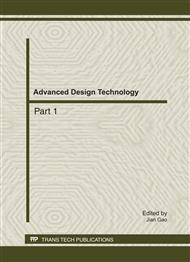p.899
p.908
p.914
p.918
p.923
p.928
p.933
p.937
p.943
Study on Submerged Jet Problem of Concave Optics Surface in Fluid Jet Polishing
Abstract:
Fluid jet polishing (FJP) is a computer controlled polishing (CCP) process. As the water effect of concave optics surface, the slurry won’t spread immediately until component have a basinful, and jet goes through a layer of slurry firstly before impact in FJP process, the submerged jet will influence material removal rate and bring on inaccurate fabrication results if it is not considered. In this paper, submerged jet characteristics are studied, and researches were taken for submerged jet polishing by simulation with FLUENT software and experiments analysis. Based on that, mathematical material removal correction with submerged depth is established for semi-submerged jet polishing. A BK7 concave surface was polished by semi-submerged jet with removal correction. The results show an affirmative proof for correction in submerged jet polishing.
Info:
Periodical:
Pages:
923-927
Citation:
Online since:
August 2011
Authors:
Price:
Сopyright:
© 2011 Trans Tech Publications Ltd. All Rights Reserved
Share:
Citation:


